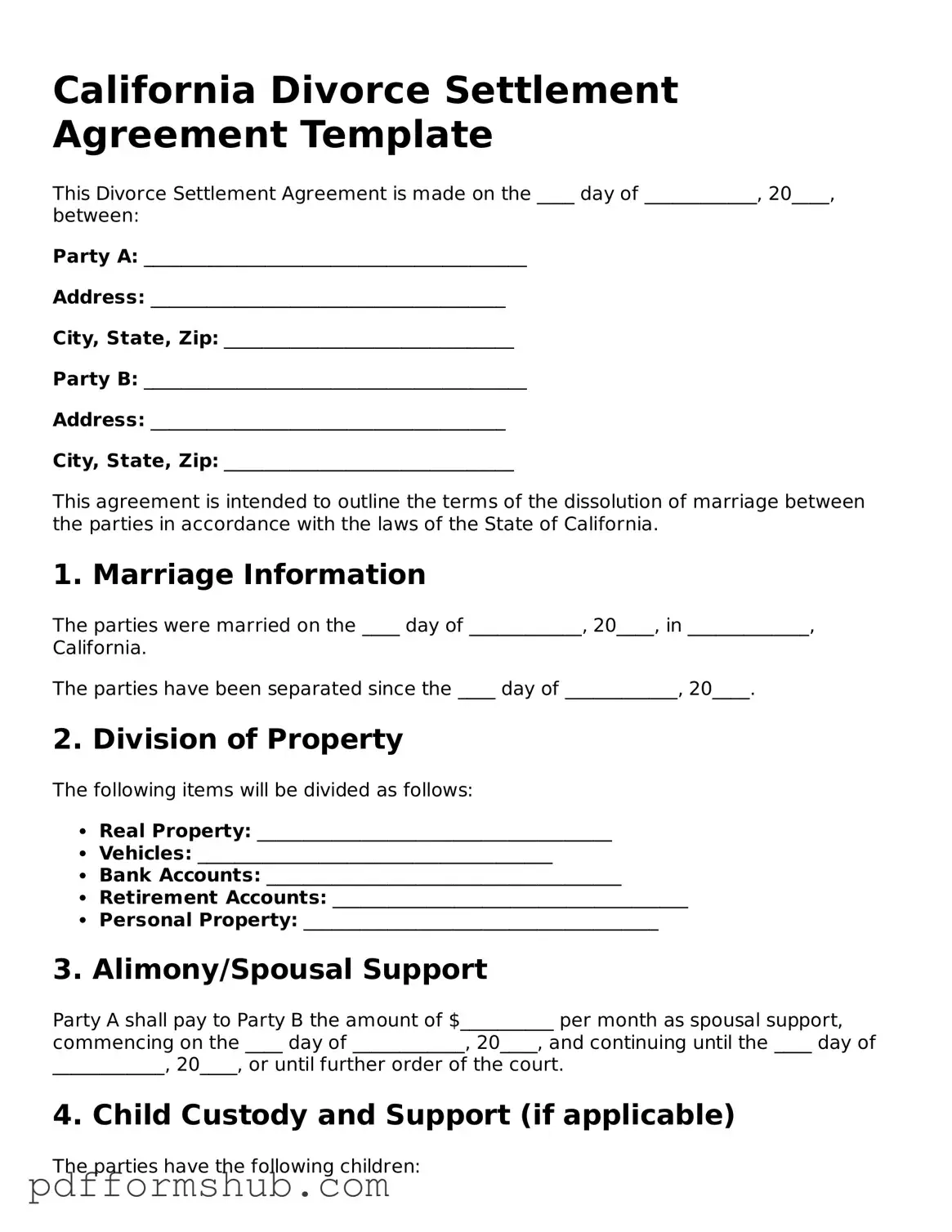Attorney-Verified Divorce Settlement Agreement Form for California State
The California Divorce Settlement Agreement form is a crucial document that outlines the terms of a divorce, including asset division, child custody, and support arrangements. This agreement helps both parties reach a mutual understanding and can simplify the divorce process. To ensure a smooth transition, it’s important to fill out this form accurately and completely; click the button below to get started.
Customize Form
